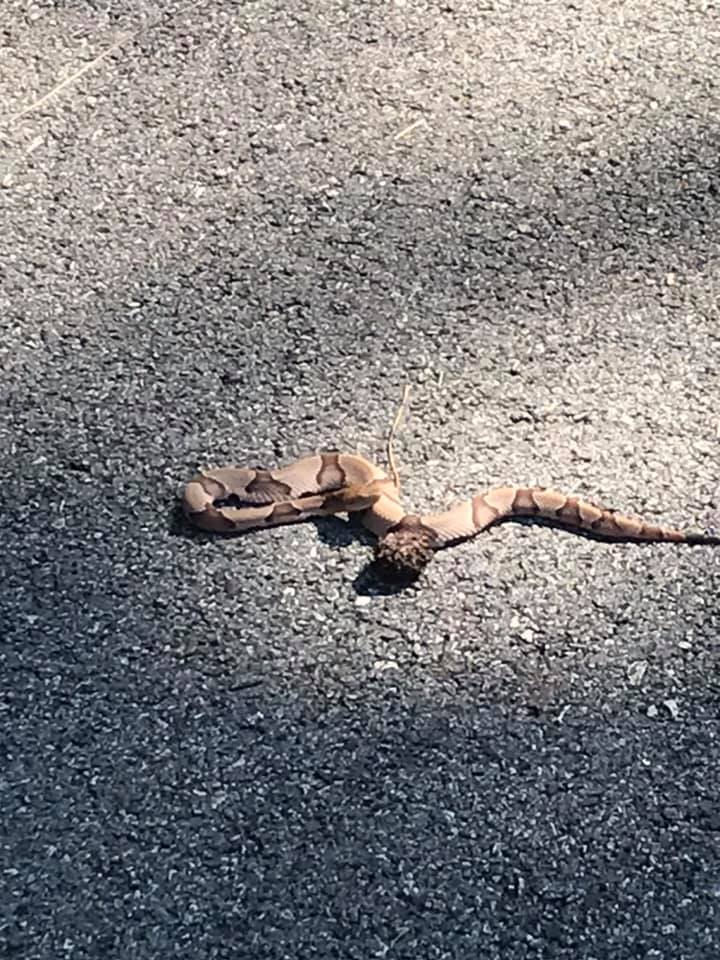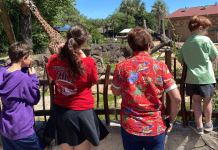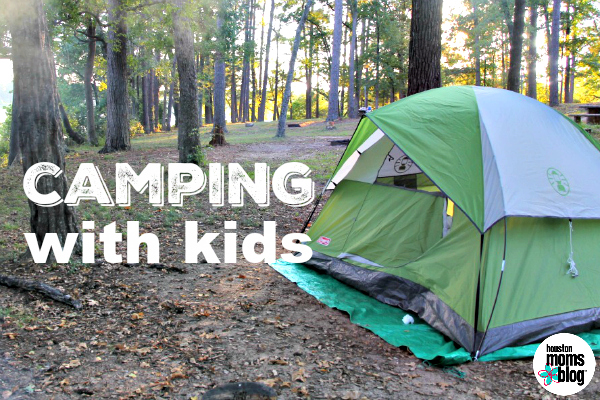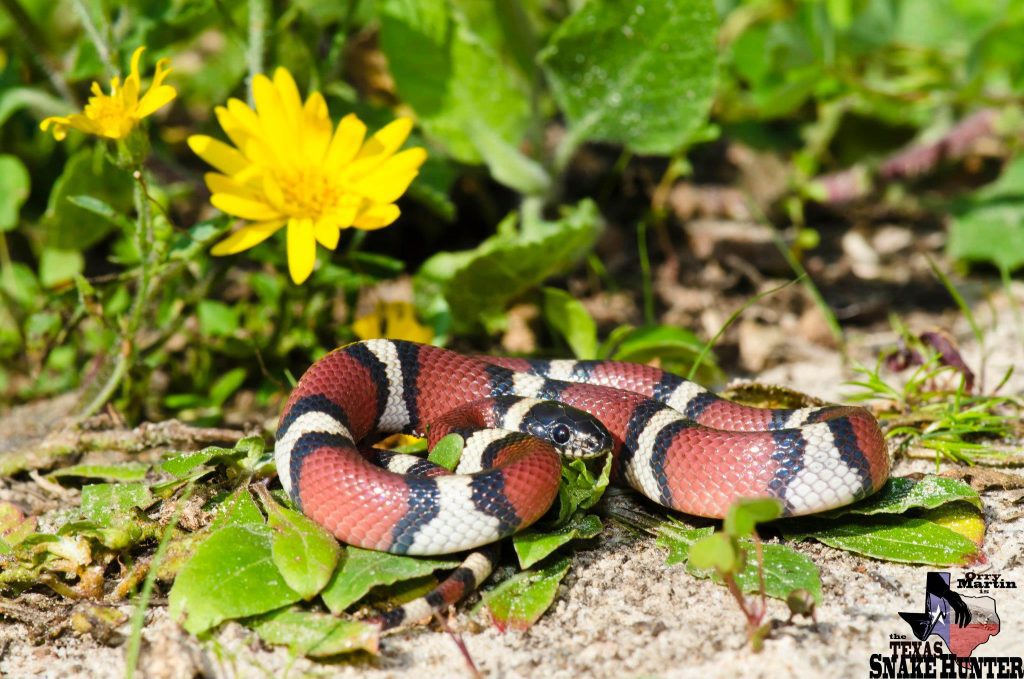
“Oh my god, it’s huge.”
From behind the glass of our patio door, my husband shone a thin laser of light outside into the darkness with a flashlight. “I’m not going to be able to sleep tonight knowing it’s out there.”
The melodrama may have been feigned, but the accompanying shudder was not.
Crouching down, we both peered out in the direction of our newly-acquired, still plastic-wrapped porch furniture, where a snake of anaconda-proportions had stationed itself – a mere two months after our relocation to Texas.
This was not our norm. We had come from Scotland, where it is cold and wet, and the wildlife is less formidable.
On this sultry September evening, it was the dog who raised the alarm, nosediving under the sofa, tail wagging with wild enthusiasm – an indubitable indicator that something was residing in a shadowy corner of our patio. Her forthright curiosity was at odds with our own cowardly trepidation.
Now, my husband is no fan of bugs {Texan, Scottish, or otherwise}; therefore, in our household, I am the one who is responsible for their capture and release, trying to keep all six legs intact as they are gently nudged outside. Snakes were not something that fell into my pest-control remit, however. These limbless, fork-tongued, potentially fanged creatures unnerved me. “I don’t like snakes,” I would say, simply because I was unsure of them.
At this point in time, the only two things I knew about snakes were 1) they could bite, and 2) they can be poisonous.
And together, that’s a potent recipe for magnified and indiscriminate human fear.
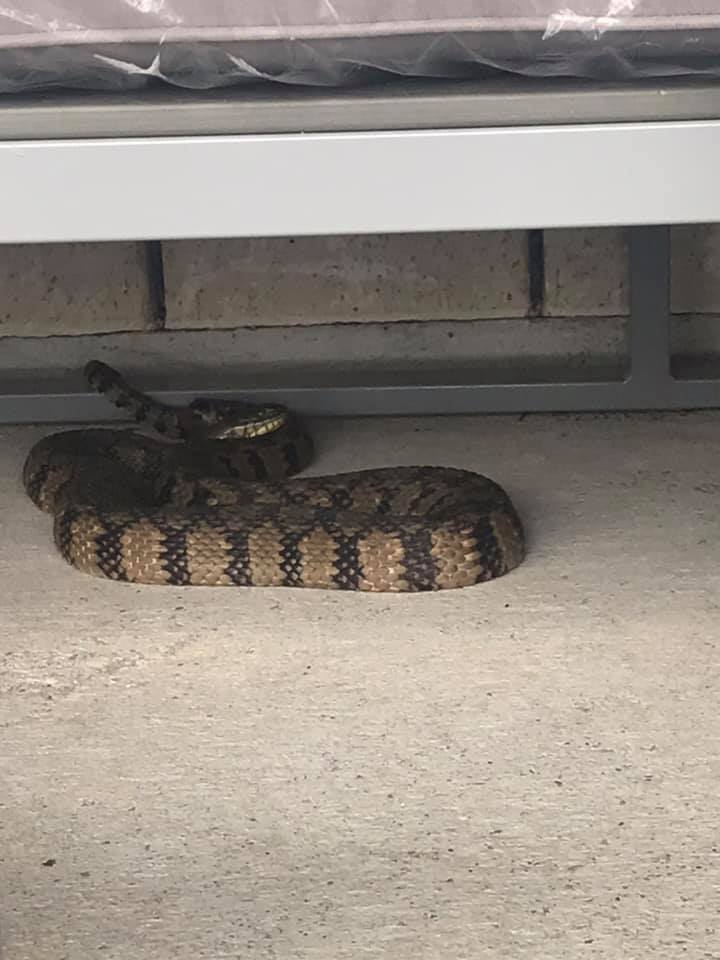
The Authority on Snakes
This all changed, when upon a neighbor’s recommendation, I signed up for a Facebook group. With over 38.5k followers, the Southeast Texas Snake ID has an eclectic and ever-growing audience. If you need a snake identified – dead or alive – these are the people who will expertly do so.
The group was formed in 2015 by Caleb Paul, to educate people on the true behavior of snakes and the benefits of having them in the ecosystem. “We strive to make snakes and people safe,” explains Caleb’s father and admin, Jeff Paul.
There is no judgement. Many members of the group have previously killed snakes themselves. You can post pictures of dead snakes, too, as long as they are put in the comments of a post, rather than the post itself.
By adopting this no-shame attitude, it’s encouraged people to better understand snakes, and the various species in Texas, which ultimately means more snakes will likely be saved in the future.
Local Snakes:: The Four You Should Know
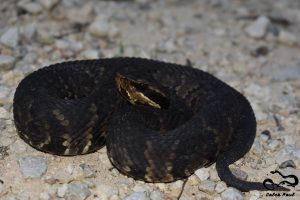
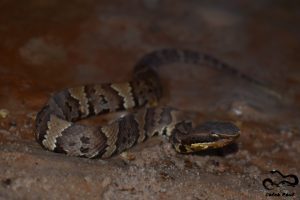
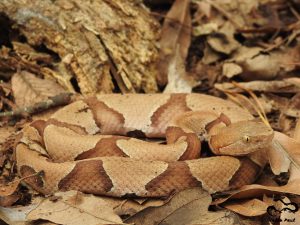
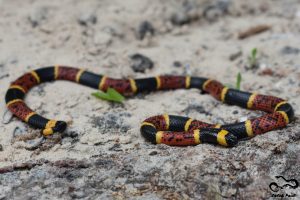
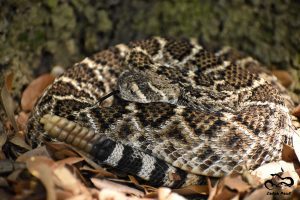

“In the greater Houston area, the four snakes to be alert over are the copperhead, cottonmouth, coral, and much less common, would be rattlesnakes,” explains Jeff. “Copperheads are best identified by the Hershey’s Kiss pattern on their skin, however an aberrant snake could lack it. Cottonmouths are best identified by the mask over their eyes. Coral snakes, unless aberrant, will be red, black, and yellow with the red and yellow touching. Rattlesnakes, of course, will have a rattle, the only exception is the pygmy which has such a tiny rattle you really can’t hear it.”
According to Jeff, people commonly mistake nonvenomous water snakes for cottonmouths.
They also confuse harmless rat snakes with venomous copperheads. And these are just a few of many other misidentifications, which have sometimes resulted in the killing of nonvenomous snakes.
Another common fallacy is using a triangular shaped head to determine whether a snake is venomous, when in fact many nonvenomous snakes will flatten their head to appear more intimidating.
“The only good snake is a dead snake…”
There are those who believe a snake on their property is a dead snake. But finding one shouldn’t be an automatic death warrant for a creature that is simply existing. In fact, many nonvenomous snakes eat venomous ones, while also providing excellent rat and mice-control.
“Probably the biggest misconception about snakes is that they are aggressive,” says Jeff. “A snake in the yard is best just left alone to do its job in nature. A snake in the house would be best swept into a garbage can and taken outside.”
And for those, who {understandably}, aren’t quite brave enough to scoop a snake up, can seek help from members in the group, who will {if they can}, do so on your behalf, and relocate the snake elsewhere.
Look at the stats, people
In some parts of the world {namely developing countries}, snakebites pose a serious, and prolific risk to their population {check out news outlet DW for the staggering numbers}.
Not in the USA. Nope. Here, snakebites constitute, on average, five deaths annually. FIVE.
Yet, despite these miniscule odds, there still seems a huge vortex of fear surrounding snakes. “Snakes are an important part of the eco system and when left alone pose no threat to humans,” explains Jeff. “Many people that get bit do so when trying to harm or handle snakes.”
So what should we do in the unlikely event of getting bit? Or indeed our child or pet?
“Remain calm and seek medical attention immediately. No need to rush but be expedient,” says Houstonian, Jeff.
If it is possible, and safe to do so, try and take a picture of the snake for identification purposes.
National Snakebite Support is also a great resource should you, or someone you know, suffer a snakebite. The Facebook page, which has almost 90K members, is solely designed to get snakebite victims connected with experts who practice the proper management of snake envenomings.
Meanwhile, if a pet gets bitten, it’s best to take it to a vet to get checked over.
“Give a snake a break”
This is a phrase coined and celebrated amongst the snake ID crew – where a snake that may have otherwise been killed, was saved due to awareness.
Undoubtedly, education is key.
If I knew what I know now, I wouldn’t of cowered behind the door that September night. Because I would have known, although large, it was a harmless water snake. Nor would a friend and I, along with our two toddlers, so closely sidestepped, a small Hershey’s Kisses-patterned snake that lay across a park trail in Tomball. Because I would have identified this as a venomous, juvenile copperhead.
Like most things in life, being more informed removes mistrust and fear, so we can all better-coexist.
And my husband? Still not a fan.
